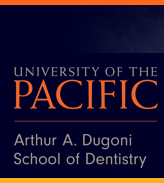Oral Health
Instructions for Authors
Please use the following guidelines when preparing your manuscript for submission to Oral Health. These formatting instructions ensure a smooth publication process and help maintain the quality and consistency of the journal.
If you use EndNote, please download our EndNote citation template. Alternatively, you may use Springer’s Basic Numbering Style, available here.
Formatting Requirements
- Please do not include a title page or abstract in the manuscript body. You will be prompted to enter these separately during the submission process (maximum abstract length: 200 words).
- Please limit the main text to 5,000 words or fewer.
- Do not include page numbers, headers, or footers—these will be added by the editors.
- Please write your article in English.
- Please indicate the type of manuscript you are submitting by selecting one of the following: Research Article, Case Report, Case Series, Review Article, or Systematic Review.
- Use standard US Letter size (8.5 x 11 inches).
- Set all margins (top, bottom, left, right) to 1 inch (2.5 cm), including for tables and figures.
- Double-space the entire manuscript, including references, figure legends, and table footnotes.
- Please use a single-column layout with both left and right justification.
- Limit references to 50 or fewer.
- Use no more than 6 graphs or tables total.
- Use sentence case for titles, author names, and section headings (i.e., capitalize only the first letter).
- Refer to figures as "Fig." (e.g., Fig. 1) and to tables using Arabic numerals (e.g., Table 2).
- Differentiate clearly between the number 0 and the letter "O", and between the number 1 and the letter "l".
- Use abbreviations sparingly and only for terms used at least three times. Define the full term on first use, followed by the abbreviation in parentheses. Use the abbreviation thereafter.
Font Requirements
- Main body text — 12 pt. Times or a closely comparable font.
- References — 10 pt. Times or similar font.
Figures
- Please use high-resolution figures, preferably encoded as encapsulated PostScript (EPS).
- Ensure no more than one-quarter of any page is left empty.
Additional Recommendations
Paragraphs and Line Spacing
- Please indent all paragraphs, except those immediately following a section heading. Use a minimum of 2 em-spaces for indentation.
- Avoid inserting extra space between paragraphs, unless separating long quotations or special remarks.
- Prevent widowed or orphaned lines (i.e., do not end a page with the first line of a paragraph or begin a page with the last line).
- All text should be left-justified; right justification is preferred when it does not distort word spacing. Please use software that handles justification well (e.g., LaTeX or Word).
Language and Grammar
- Please write all submissions in English.
- Avoid foreign words unless commonly used in academic English (e.g., in vitro, et al.).
- Ensure proper grammar. We recommend referring to The Elements of Style by Strunk and White, or The Chicago Manual of Style.
Scientific Conventions
- Microorganisms: Follow the International Nomenclature Committee guidelines: use full genus and species names first, then abbreviate, and italicize them (e.g., Escherichia coli , then E. coli ).
- Units of measurement: Follow the International System of Units (SI units). Use spaces between numbers and units (e.g., 25 mg), and avoid commas for decimals.
- Italic/Roman type: Italicize genetic loci, but not proteins. Do not italicize commonly used Latin terms (e.g., et al., in vivo). Use Roman type for abbreviations (e.g., cf., e.g.).
- Greek letters: Use the “Insert Symbol” or proper font coding, not graphical insertions.
Text Appearance
- Please use black font for the main body of the text.
- Use italics for emphasis instead of underlining or colored text.
- Do not include any colored markup, comments, or track changes in your final submission.
Headings and Hierarchy
- Please distinguish headings by font style or use of small caps. Ensure consistent font face across headings and establish hierarchy by adjusting font size.
- Leave appropriate space above and below headings.
Font and Size
- Use Times or a comparable serif font for the main text. For secondary font (e.g., headings), use a sans-serif font like Arial.
- The main body should be in 12 pt font. Do not use fonts smaller than 6 pt anywhere in the manuscript.
Foreign Terms
- Foreign terms should be italicized rather than underlined.
Titles
- Please use italics for titles of books, movies, and similar works.
References
- Please use the Vancouver referencing style for all in-text citations and the reference list.
- Use in-text citation in parentheses, e.g., (1), (2–4), rather than square brackets.
- In the reference list, order entries numerically as they appear in the text. Do not use alphabetical order.
- List up to 6 authors; for more than 6, list the first 6 followed by “et al.”
- Only published work and accepted manuscripts ("ahead of print") should appear in the reference list. Unpublished data should be mentioned in text only and not numbered.
- Use proper punctuation and formatting. For guidance, refer to the ICMJE Recommendations.
- It is highly recommended to use a reference management program such as EndNote, Zotero, Mendeley, or RefWorks.
Example Reference Types
- Journal Article
In-text: (Smith et al., 2020) or (1)
Reference: Smith J, Johnson A, Lee T. Effects of remineralizing agents on enamel. J Dent Res. 2020;99(4):456–462. - Book
In-text: (Roberts, 2015)
Reference: Roberts MW. Pediatric Clinical Dentistry. New York: Dental Press; 2015. - Book Chapter
In-text: (Ng & Hargreaves, 2017)
Reference: Ng YL, Hargreaves KM. Pulp therapy for the primary dentition. In: Nelson SC, editor. Advanced Pediatric Endodontics. Philadelphia: Elsevier; 2017. p. 85–102.

